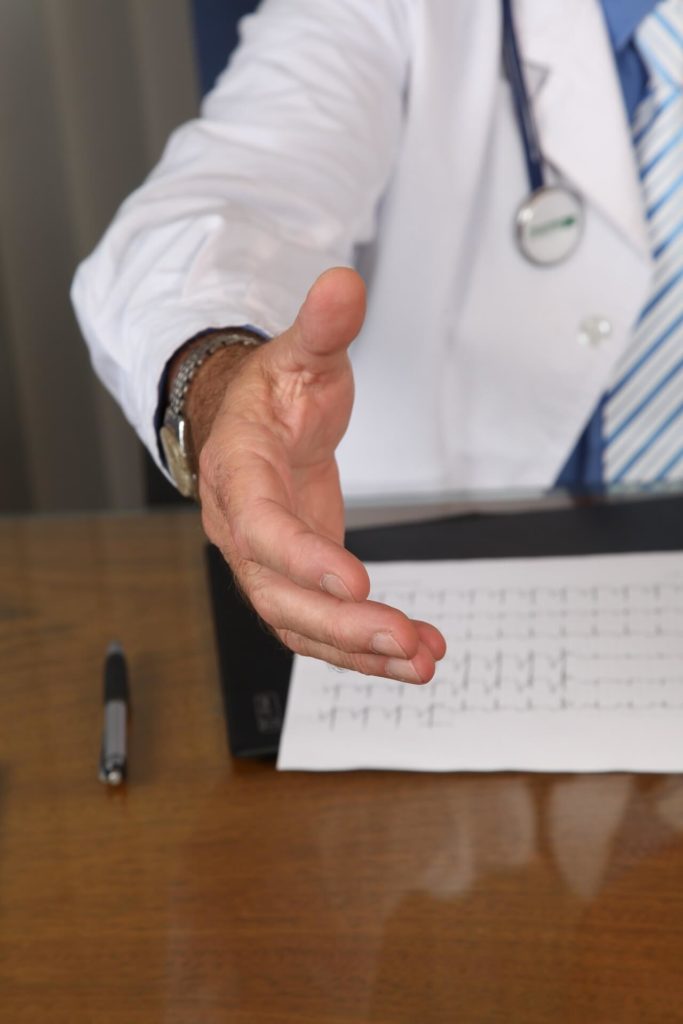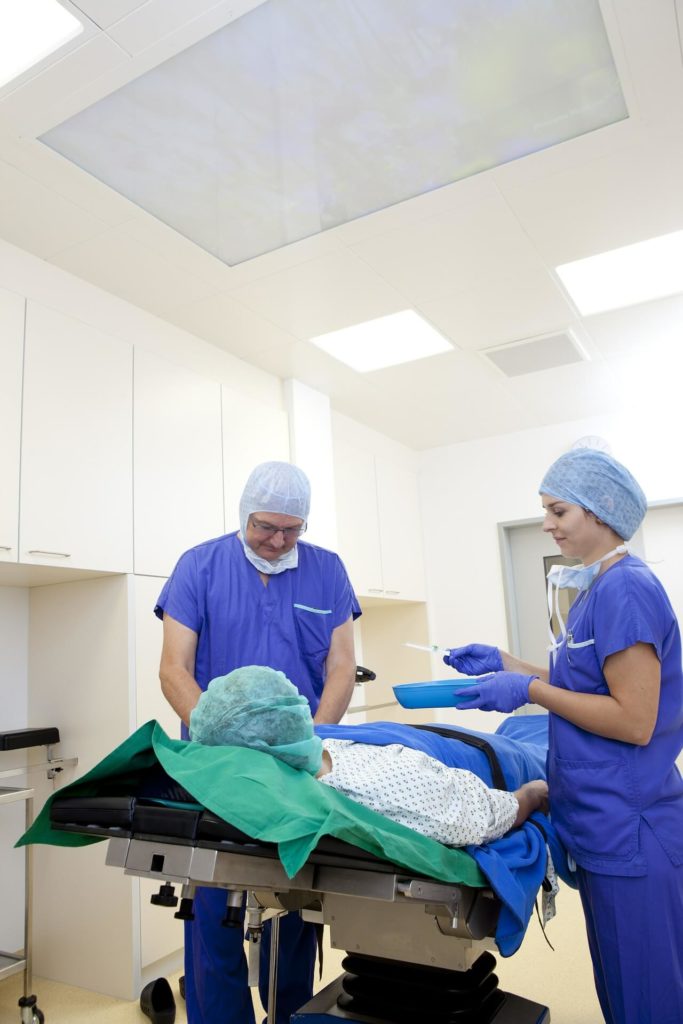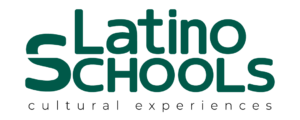Menu
Medical Spanish course: turn your health care job into a high-paying career
It’s no secret that all aspects of the medical industry seek specialists, and the growing number of Hispanic people in many countries demands professionals with medical Spanish skills.
From doctors to technicians, this industry’s job market is expected to escalate. Getting additional degrees and specializing can help professionals in all aspects of patient care earn prestige and credibility.
Health care workers stand to earn more money and respect if they’re bi-lingual. A second language is always a career-advancing move, but not every language has the potential to enrich a person’s career.
Professionals who learn Spanish have the potential to grow at a faster pace professionally. They earn more money too. In sum, Spanish language can be one of the biggest assets a medical worker can have; it’s the key to success now and down the road.
A rising medical employment dilemma
It’s a problem that shows no sign of diminishing: the medical field needs more Spanish-speaking workers able to use medical terminology. A translator may not always be available when patients try to communicate vital information. As far back as 2008, 74-percent of U.S. hospitals say they treat patients whose first language isn’t English.
Human resource directors quietly began giving bonuses and incentives to staffers willing to seek Spanish medical language training. Over time, this trend has escalated. As of 2009, medical schools in Florida and California began requiring Spanish. The reason? Between 2010 and 2020, Spanish will become the most common non-English language in the U.S. That’s why medical staffers must be able to communicate effectively.

How do health care workers benefit from learning medical terms in Spanish?
At the LatinoSchools, we began to recognize the growing needs of Spanish-speaking patients years ago. Our specialized Spanish courses – designed to aid medical personnel at all levels – have been honed to pinpoint advances in the medical field. These are some of the benefits our students acquire:
- They can pick up their careers and move them anywhere Spanish skills are needed. For example, Georgia’s Hispanic population has doubled since 2000. The need for medical personnel in that state is acute.
- Practitioners can write their own salary tickets if they show proof of medical Spanish skills.
- The ability to read medical reports in Spanish makes job candidates more valuable to hospitals, clinics and practices.
- Medical Spanish mastery regularly qualifies careerists for additional types of medical studies.
- People with the ability to read and translate medical records get more overseas job opportunities.
- Medical Spanish credentials appeals to international organizations desperate for bilingual assistance.
- Bilingual medical personnel are at an advantage if they establish their own businesses.
- Mastering medical Spanish advantages those seeking careers focused on tropical diseases and epidemics.
Medical Spanish programs as diverse as the students seeking them
For medical professionals following career tracks that range from surgeon to technician, there are no disadvantages to learning medical Spanish.
In fact, careers can be accelerated based on one’s desire to become bilingual as a way to serve patients properly. At LatinoSchools we understand the constraints careerists are under. They are short on time and may be short on money.

Reasons to learn Spanish terminology for all types of medical jobs
About a year ago, journalist Antonio Flores undertook a Pew Research assignment to study the population makeup of 58 million Latinos reported by the U.S. Census Bureau. What spurred this population growth? Immigration from Spanish-speaking nations in Central and South America.
Even slowing immigration numbers from Mexico hasn’t impacted this trend, which is slated to keep increasing. Despite diverse dialects and inflections, all immigrants need medical care to stay healthy and have their diseases and ailments properly diagnosed and treated.
Not all of them will learn enough English to communicate with medical professionals. Not all of them may understand diagnoses, treatments and prescription directions. Miscommunication can put lives in danger. With the growth of education in medical Spanish language programs, everyone in the medical field benefits.

That’s why so many students come to us using their vacation time. Depending upon the curricula they choose, an intensive schooling experience can run from one week to three. Four-hour daily immersion classes with other like-minded people are intense and targeted.
Classes are purposely kept small – no more than 5 students. As a bonus, students may make personal connections in classes that advance their careers down the road.
Variety is the spice of life and medical Spanish training. It matters not whether a student’s ability to read Spanish is rudimentary or advanced. Each learner is tested for placement so students study with people whose abilities are similar.

Some students learn better in a classroom environment. Others prefer to be privately tutored. Both options are available to students. Further, there are enrichment programs available for students seeking deep cultural immersion in addition to mastering medical terms in Spanish at our schools.
Some students express a desire to study with members of their age cohort. We make every effort to form classes based on their requests. Those who can’t spare time to travel find that our online learning programs are as enriching as onsite classes. This is a viable option for medical professionals that appeals to many health care givers.
Scholars-in-residence live with host families and receive two meals a day so they can focus on their studies full time. They have access to all of the comforts of home, including laundry facilities and Internet access. This exceptional experience enriches the lives of students beyond mastering Spanish medical terminology.
Our approach to academic excellence
At the LatinoSchools, our cutting-edge methodologies and practices increase every student’s Spanish mastery via our interdisciplinary approach to education. Learning accelerates as students advance into the curricula designed to speed up language acquisition.
The school’s methodology includes the practices and approaches found in other contemporary medical Spanish programs. Total physical response. Cooperative learning. Language experience. Directed reading. Thinking activities. And the writing process.
Further, our ACTFL testing standards and European standard language levels are all transferable beyond Latin America, which is why so many institutions send groups of medical students to our facilities in Ecuador, Peru or Bolivia. They have been doing so for three decades and add new programs regularly, in keeping with industry growth.

Discover our Spanish course for medical personnel.
Archives
- April 2020
- March 2020
- February 2020
- January 2020
- December 2019
- November 2019
- October 2019
- September 2019
- August 2019
- July 2019
- June 2019
- May 2019
- April 2019
- March 2019
- February 2019
- January 2019
- December 2018
- November 2018
- October 2018
- September 2018
- August 2018
- May 2018
- March 2018
- November 2017
- October 2017
- September 2017
- August 2017
- July 2017
- June 2017
- May 2017
- April 2017
- March 2017
- June 2004




